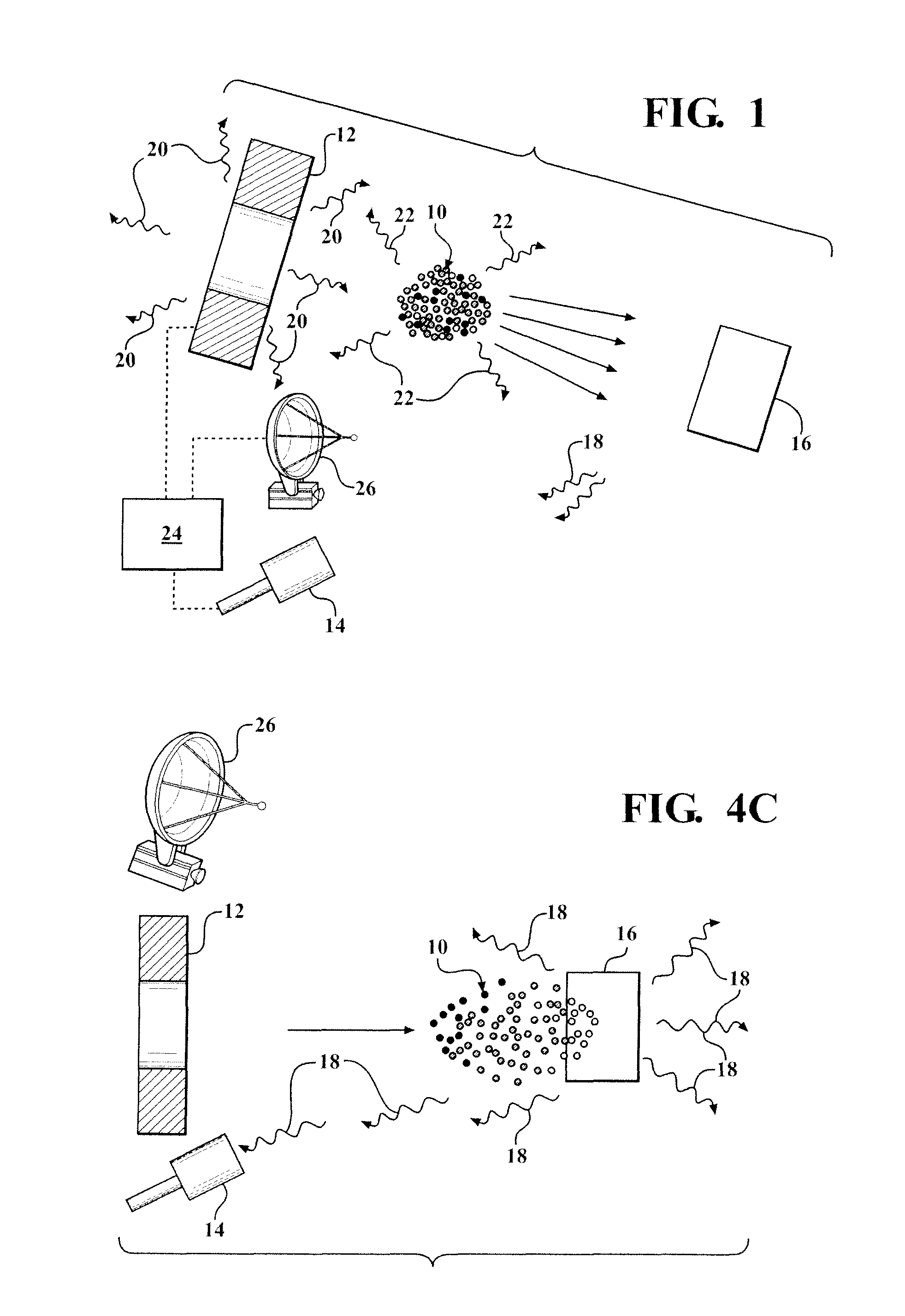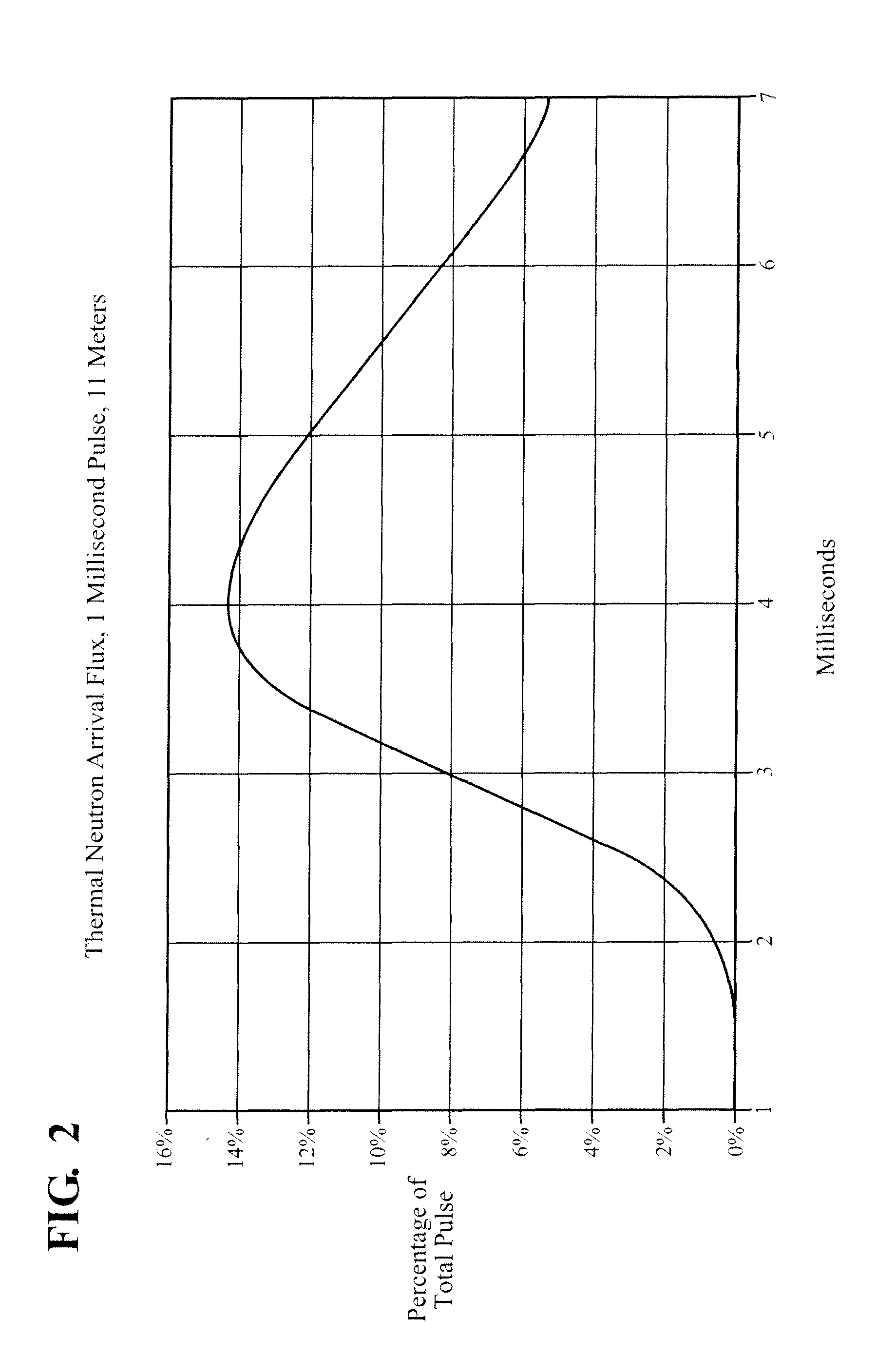Neutron fluorescence with syncrhonized gamma detector
a gamma detector and neutron fluorescence technology, applied in the field of neutron emission, can solve the problems that the gamma detector used as part of the substance identification system cannot be completely shielded from fratricidal gamma rays, noise or nuisance signals, unwanted or nuisance gamma rays may be produced, etc., to minimize the amount of fratricidal gamma rays, improve the effective snr, and minimize the amount of noise signals
- Summary
- Abstract
- Description
- Claims
- Application Information
AI Technical Summary
Benefits of technology
Problems solved by technology
Method used
Image
Examples
example
[0051]As a further example of one possible embodiment of the invention, one may consider a control mechanism 24 that includes a computer with a means of generating several channels of digital electronic pulses such as TTL (Transistor-Transistor Logic) pulse train generators, a collimated pulsed neutron source 12, a range-finding device 26 such as a RADAR or LIDAR gun directed along the path of the collimated neutron pulses, and a gamma ray detector 14 whose data acquisition can be gated ON or OFF by a digital electronic pulse. In this example, the computer (incorporated into or operated in conjunction with the control mechanism 24) may include a means of moving / controlling the pointing direction of the collimator on the neutron source 12 and the pointing direction of the range-finding device 26.
[0052]Continuing in this example, the computer aims the collimated neutron source 12 in a particular direction of interest or causes it to scan across a particular field of view, while direct...
PUM
| Property | Measurement | Unit |
|---|---|---|
| temperature | aaaaa | aaaaa |
| speed | aaaaa | aaaaa |
| distance | aaaaa | aaaaa |
Abstract
Description
Claims
Application Information
 Login to View More
Login to View More - R&D
- Intellectual Property
- Life Sciences
- Materials
- Tech Scout
- Unparalleled Data Quality
- Higher Quality Content
- 60% Fewer Hallucinations
Browse by: Latest US Patents, China's latest patents, Technical Efficacy Thesaurus, Application Domain, Technology Topic, Popular Technical Reports.
© 2025 PatSnap. All rights reserved.Legal|Privacy policy|Modern Slavery Act Transparency Statement|Sitemap|About US| Contact US: help@patsnap.com



